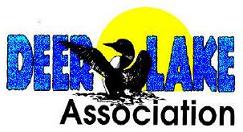

Deer Lake Association
A member of the Minnesota Lakes Association
| Spotlight |
|---|
|
|
Itasca County Sensitive Lakeshore Identification
Preliminary Note: Deer Lake did not receive the detailed analysis of its sensitive shores, as described below. However, it did receive the "Rapid Assessment" with the results shown HERE.
The Minnesota DNR has recently been authorized to bring their Sensitive Lakeshore Identification project to Itasca County. The mission of this project is to find smaller sections of larger lakes that need special zoning protections. Thus, a General Development (GD) lake or a Recreational Development (RD) lake may have within it a shallow bay, narrows, or other physical feature that provides essential habitat to fish and wildlife, or has the potential for severe erosion or other vulnerabilities. These areas would be characterized more as Natural Environment (NE) sections. The long range intention is to identify areas via scientific analysis that can be protected by conservation easements, restoration projects, local zoning ordinance restrictions, and additional safeguards. More details can be found on the DNR Website:
A meeting was held in August, 2011, in Grand Rapids of many stakeholders and decision makers to identify which lakes would receive the extensive analysis from a team of DNR scientists. Those lakes were Bass (north of Cohasset), Sand (northeast of Bowstring) and Turtle. It was determined that these lakes best fit the criteria for the extensive study. These criteria included: large size, undeveloped parcels, strong lake association for assistance, and ability to rezone clearly demarcated sections such as bays or narrows. As an example of what will be done, this link will take you to a completed report on a lake in Cass County
Although only three lakes will receive the extensive study initially, several more will be chosen in the future. Additionally, all the county lakes are candidates for the "Rapid Assessment Model." This method of sensitive shore identification begins with identifying loon nesting sites on the lake. Loon Watchers and other volunteers are needed for this project.
See attachments:
· Brief project summary/my contact information. This sheet can be cut into thirds and handed out to interested parties.
· Sample email to send to potential volunteers.
Please let me know if you have any questions about the attachments or the project – and thanks again!
Kris Carlson, DNR
For more information or to sign up for a lake to survey, please contact Kristin Carlson at 218-833-8646 or Kristin.Carlson@state.mn.us.